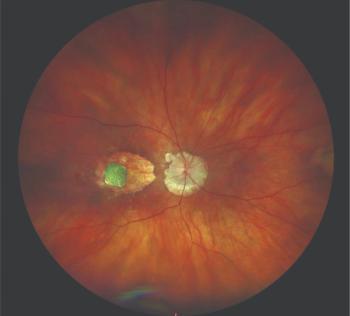
Patients with milder keratoconus fare better after cataract surgery
Philadelphia-After cataract surgery, patients with mild keratoconus may not need rigid gas-permeable (RGP) contact lenses for optimal vision, whereas those with moderate or severe disease might require these lenses, according to Nuthida Thebpatiphat, MD.
She discussed the best way to deal with patients who have keratoconus and then develop a cataract.
"Keratoconus is a disorder in which corneal thinning progresses during adolescence," explained Dr. Thebpatiphat, Wills Eye Hospital at Jefferson, Philadelphia. "As these patients age, the probability of developing cataract increases, and cataract surgery may be necessary. Because these patients have irregular, high astigmatism and increased axial length, current methods to determine the IOL power may be inadequate in these patients."
Twelve eyes of nine patients (mean age, 55 years) were included in the analysis. The patients had keratoconus that ranged from mild to severe (Figure 1) and underwent clear corneal phacoemulsification followed by posterior capsular IOL implantation, she explained.
The preoperative parameters analyzed were patient sex, age, the best-corrected visual acuity (BCVA), refraction, and axial length. Three months after the surgery, the uncorrected visual acuity (UCVA), BCVA, visual improvement, sim K, and the fitting of the RGP lenses were assessed.
Nuclear sclerosis was the most common type of cataract in this patient population, Dr. Thebpatiphat said.
"The preoperative BCVA was 20/100, which was obtained using RGP lenses in 83%," Dr. Thebpatiphat added. "All patients had an improvement in the BCVA, with a mean level of 20/32. No patients had to undergo a corneal transplantation after cataract surgery."
"In the eyes with severe keratoconus, spectacle plane refraction could not be achieved in all eyes, and the [vision was] corrected with the fitting of an RGP lens," she explained.
Preoperatively, 60% of the patients with mild keratoconus used RGP lenses to obtain the optimal level of vision. Postoperatively, 20% obtained the best vision with a soft toric lens, 40% with spectacles, and none used RGP lenses, according to Dr. Thebpatiphat.
Newsletter
Don’t miss out—get Ophthalmology Times updates on the latest clinical advancements and expert interviews, straight to your inbox.





